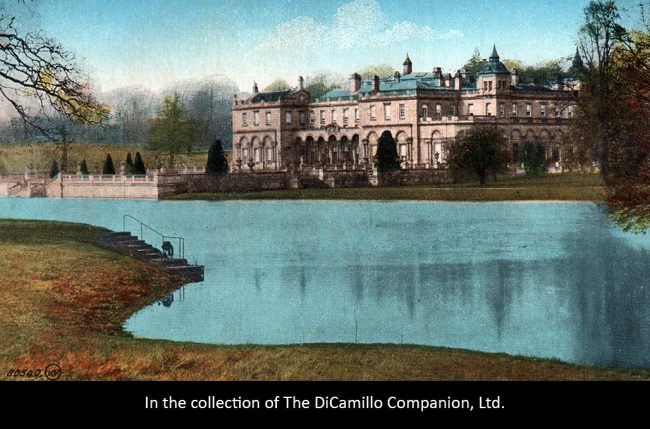
The house from an early 20th century postcard
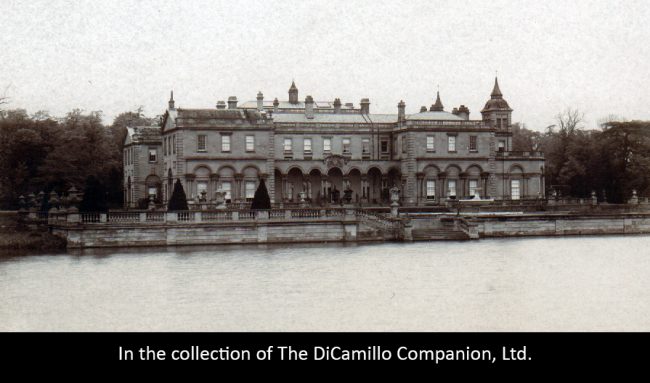
The house, seen from across the lake, from an early 20th century postcard.
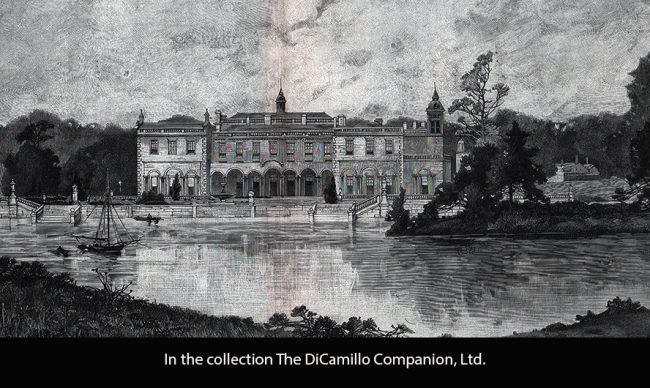
The house from the Aug 19, 1893, issue of "The Illustrated London News"
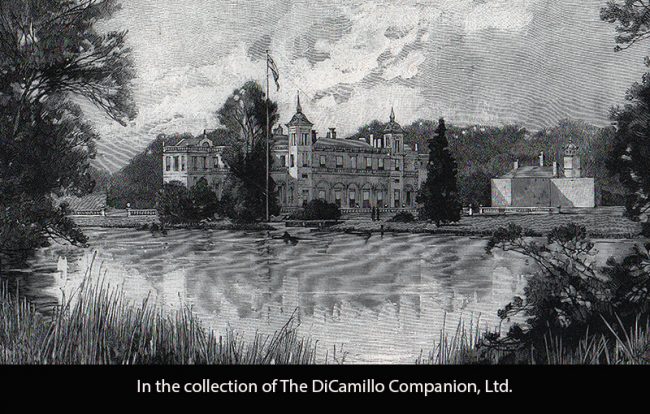
The house from the Aug 19, 1893, issue of "The Illustrated London News"
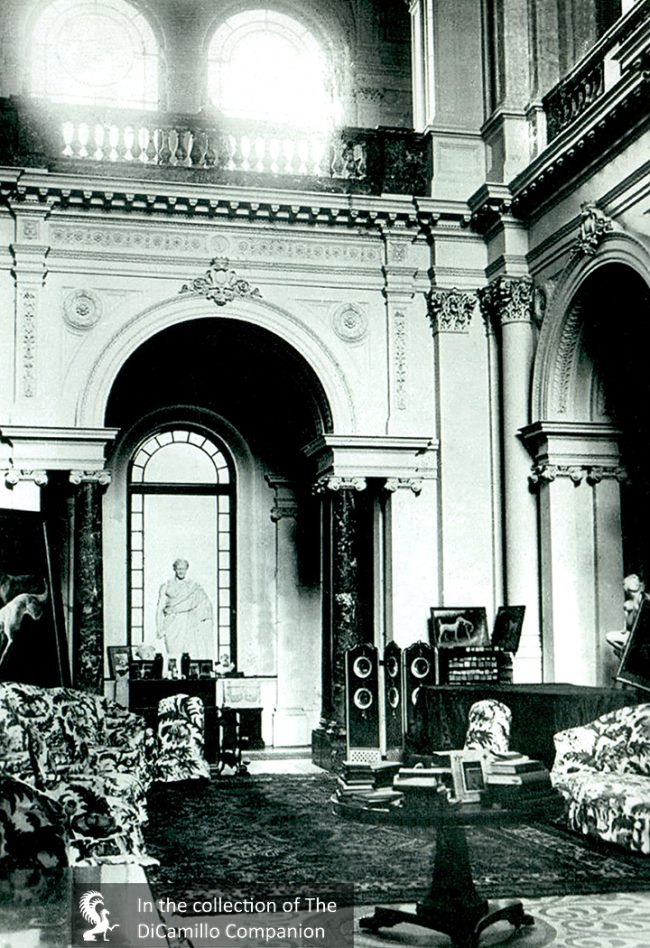
The hall from a 1904 postcard
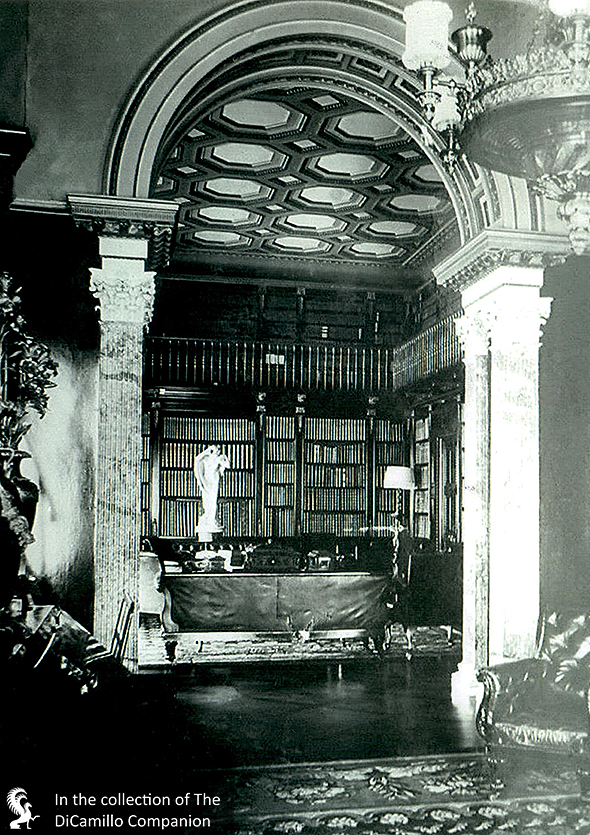
The library from a circa 1909 postcard
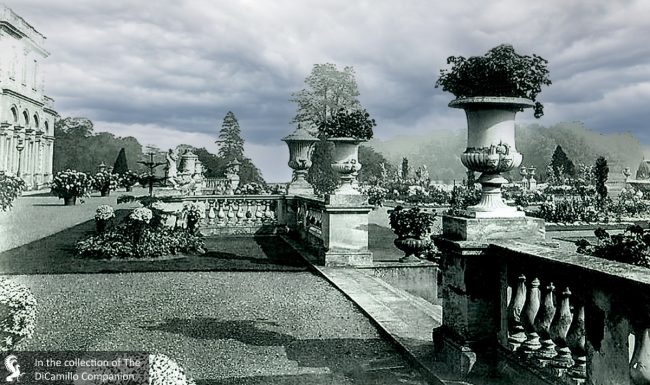
The terrace from a circa 1911 postcard
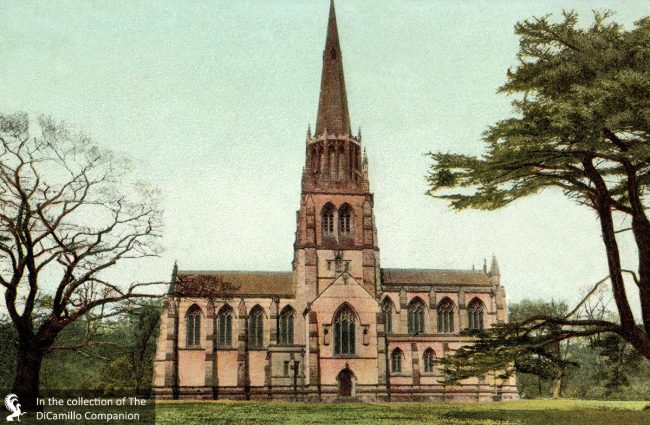
The Church of St. Mary the Virgin, Clumber, from a 1907 postcard.
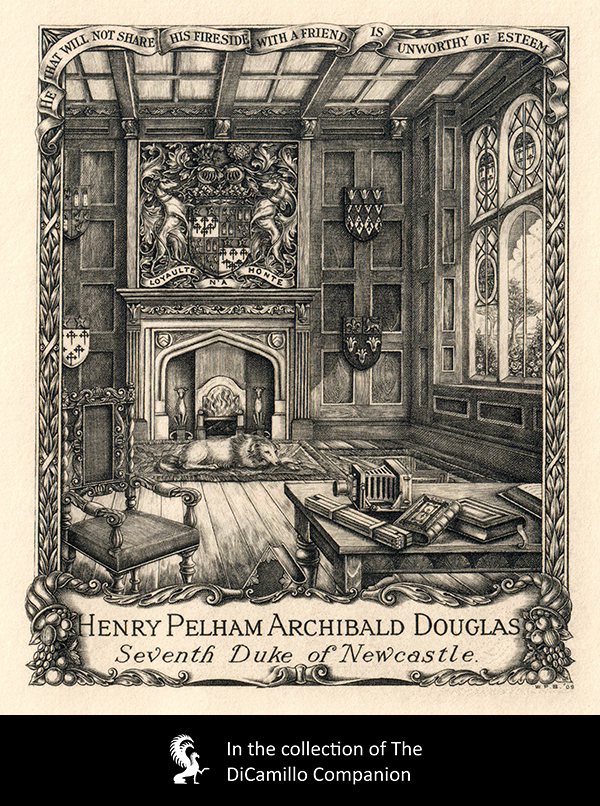
Bookplate of the 7th Duke of Newcastle, designed in 1909 by W.P. Barrett.
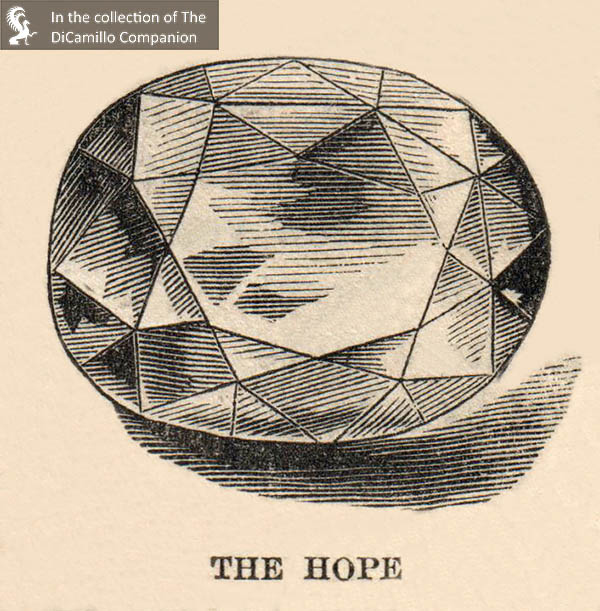
The Hope Diamond from an 1866 illustration in "Harper's New Monthly Magazine"
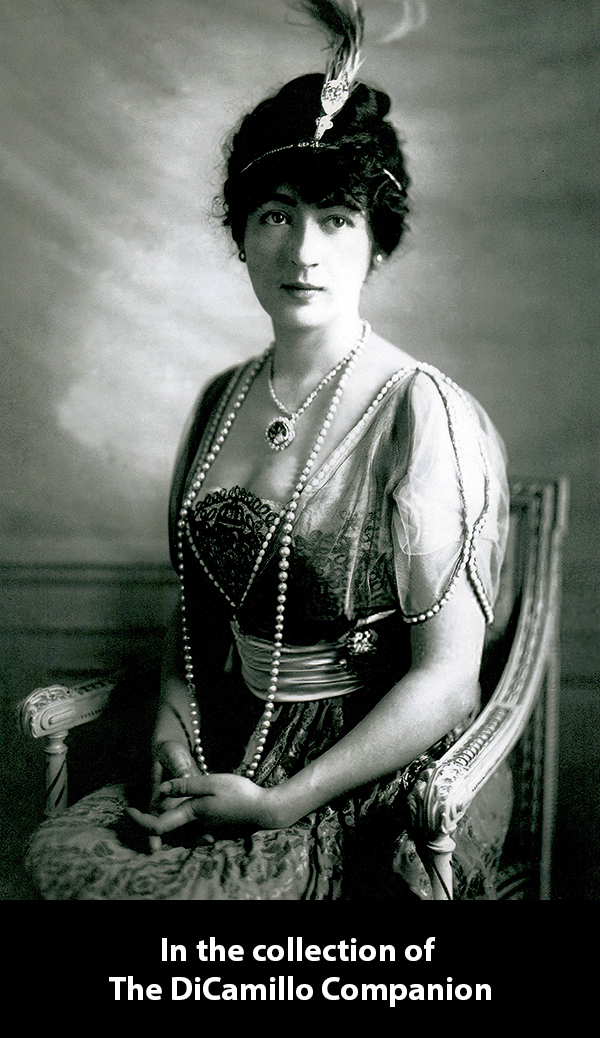
Evalyn Walsh McLean wearing the Hope Diamond in 1915
Built / Designed For: 2nd Duke of Newcastle
House & Family History: Clumber, formerly the seat of the dukes of Newcastle, was once part of Nottinghamshire's famed "Dukeries" (so called because this part of Nottinghamshire contained four ducal seats: Clumber House, Thoresby Hall, Welbeck Abbey, and Worksop Manor). The enormous Italianate house at Clumber, designed and built in the 18th century to the designs of Stephen Wright, was almost entirely demolished in 1938; the Duke's Study is the only surviving bit. The outline of the house is preserved today by paving stones in the grass. Clumber House experienced two devastating fires: March 1879 and April 1912; after the 1879 fire the house was extravagantly rebuilt to the designs of Charles Barry Jr. The great house never recovered from the 1912 fire; in 1937, as country house life was declining and taxes increasing, the decision was made to demolish Clumber House. Bits and pieces of Clumber ended up at numerous houses: statuary and architectural elements went to Thornbridge Hall (the home of Henry Boot, whose company demolished Clumber), while Clumber Lodge at Newstead Abbey (the ancestral home of the lords Byron) was built from material that came from Clumber House. The 9th Duke sold the Clumber Estate to the National Trust in 1946 and moved his family to Boyton Manor, Wiltshire. The 2nd Duke, in addition to building the house, also created a dog breed, the Clumber Spaniel.
Collections: Clumber had an important collection of paintings (many of them acquired by the 4th Duke) that included works by Poussin, Gainsborough, Rembrandt, and van Dyke. The library contained three Caxtons and a Shakespeare First Folio. In 1937, in anticipation of the house's demolition, the contents of Clumber House were sold. William Hoare's "1st Duke of Newcastle" and "The Rt. Hon. Henry Pelham" were sold to the House of Lords. The Newcastle Papers were sold to Nottinghamshire University Library. Circa 1807 Thomas Johnes purchased fireplaces from Fonthill Splendens, which he installed at his Welsh seat, Hafod; when the 4th Duke of Newcastle purchased Hafod in the early 19th century he removed the Fonthill fireplaces and had them installed at his primary seat, Clumber House. The hall at Aske Hall has a fireplace that was removed from Clumber, while Buxted Park has, in its dining room, a circa 1715 chimneypiece from Clumber. In 1884, the man who would become the 8th Duke (he inherited the dukedom in 1928, when his brother died) inherited the Hope Diamond (see "Images" section) from his grandmother, Anne Adele Hope (widow of Henry Thomas Hope). At the time of his 1902 divorce from his first wife, the American actress May Yohé, the 8th Duke received permission from the British courts to sell the Hope Diamond to pay some of his debts (the famous stone was entailed as part of his grandmother's trusts).
Garden & Outbuildings: The grounds (over 3,800 acres) of Clumber today contain at their heart an L-shaped serpentine lake, complete with wooded islands, and dotted with the Doric Temple, gate piers, and lodges, all part of the designs of Stephen Wright and done up in the mid-18th century for the 4th Duke of Newcastle. Clumber also contains the longest avenue of lime trees in Europe, planted in 1840 with 1,296 trees for the 4th Duke. In the Victorian era pleasure gardens bursting with paths and specimen trees were laid out by William Sawrey Gilpin. There are also late 19th century greenhouses (glasshouses), a fig house, a walled kitchen garden, and vineries. The four stone urns that today surround the central fountain in Harewood House's terrace were purchased in 1937 by the 6th Earl of Harewood from Clumber Park. The stableblock, which probably pre-dates the house, is extant.
Chapel & Church: Between 1886 and 1889 the Church of St. Mary the Virgin, a High Victorian Gothic style church (see "Images" section), was built to the designs of G.F. Bodley. Commissioned by the 7th Duke of Newcastle, a devoted Anglo-Catholic, the Grade I-listed church, filled with stained glass by C.E. Kempe, is considered a masterpiece of Gothic Revival architecture.
Architect: Stephen Wright
Date: 1760sArchitect: George Frederick Bodley
Date: 1886-89John Bernard (J.B.) Burke, published under the title of A Visitation of the Seats and Arms of the Noblemen and Gentlemen of Great Britain and Ireland, among other titles: 2.S. Vol. I, p. 126, 1854.
John Preston (J.P.) Neale, published under the title of Views of the Seats of Noblemen and Gentlemen in England, Wales, Scotland, and Ireland, among other titles: Vol. III, 1820.
Country Life: XXIV, 352, 1908.
Title: Harewood Guidebook - 1990s
Author: 7th Earl of Harewood
Year Published: NA
Reference: pg. 51
Publisher: Yorkshire: Harewood House Trust Ltd.
ISBN: 0952102145
Book Type: Softback
Title: Lost Houses of Wales, The
Author: Lloyd, Thomas
Year Published: 1989
Reference: pg. 51
Publisher: London: SAVE Britain's Heritage
ISBN: 0905978277
Book Type: Softback
Title: Buildings of England: Sussex, The
Author: Pevsner, Nikolaus; Nairn, Ian
Year Published: 1973
Reference: pg. 466
Publisher: London: Penguin Books
ISBN: 0140710280
Book Type: Hardback
Title: English Country House From the Archives of Country Life, 1897-1939, The
Author: Hall, Michael
Year Published: 1994
Publisher: London: Mitchell Beazley
ISBN: 1857325303
Book Type: Hardback
Title: Disintegration of a Heritage: Country Houses and their Collections, 1979-1992, The
Author: Sayer, Michael
Year Published: 1993
Publisher: Norfolk: Michael Russell (Publishing)
ISBN: 0859551970
Book Type: Hardback
Title: National Trust Handbook 2008, The
Author: Peel, Lucy (Editor)
Year Published: 2008
Reference: pg. 220
Publisher: England: The National Trust
ISBN: 9780707804064
Book Type: Softback
House Listed: Demolished
Park Listed: Grade I
Past Seat / Home of: Henry Fiennes Pelham-Clinton, 2nd Duke of Newcastle-under-Lyne and 9th Earl of Lincoln, 1767-94; Thomas Pelham-Clinton, 3rd Duke of Newcastle-under-Lyne, 1794-95; Henry Pelham Fiennes Pelham-Clinton, 4th Duke of Newcastle-under-Lyne, 1795-1851; Henry Pelham Pelham-Clinton, 5th Duke of Newcastle-under-Lyne, 1851-64; Henry Pelham Alexander Pelham-Clinton, 6th Duke of Newcastle-under-Lyne, 1864-79; Henry Pelham Archibald Douglas Pelham-Clinton, 7th Duke of Newcastle-under-Lyne, 1879-1928; Henry Francis Hope Pelham-Clinton-Hope, 8th Duke of Newcastle-under-Lyne, 1928-38.
Current Ownership Type: The National Trust
Primary Current Ownership Use: Visitor Attraction
House Open to Public: Grounds Only
Phone: 01909-476-592
Fax: 01909-500-721
Email: [email protected]
Website: https://www.nationaltrust.org.uk
Historic Houses Member: No